Anti-Stress Yoga: How to reduce stress in 21 days?
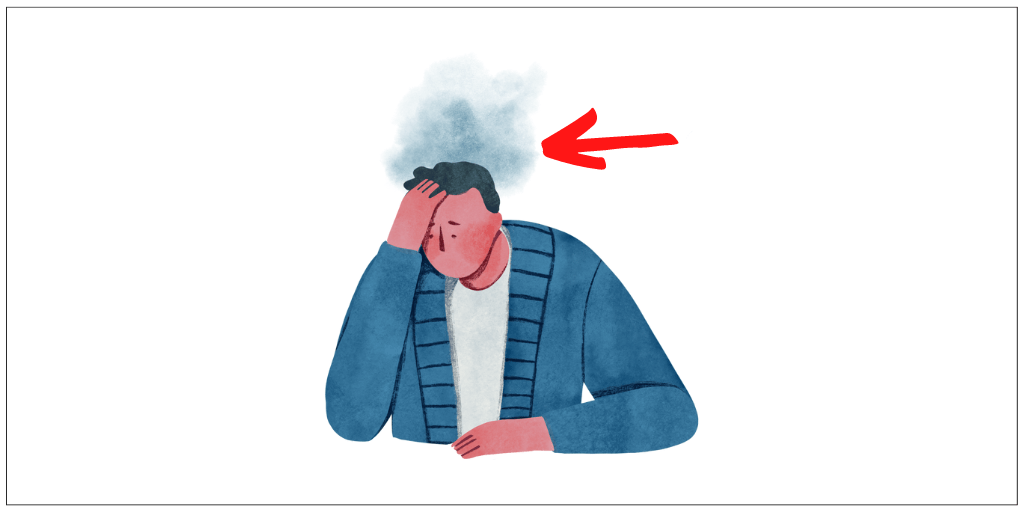
Being late, dealing with unexpected events, having to answer a phone that never stops ringing... In our modern life, there are many events that can cause stress. You certainly want to know the secrets of yoga masters to reduce stress.
Can yoga really reduce the stress that prevents you from living life to the fullest?
Yoga is offered as a solution to anxiety. But what actually works? Is this posture better than another? This may seem complex at first. Yet you don't need to become an expert.
You can now, use millennial yoga to reduce your stress at any time. In this guide I will give you the procedure to follow step by step to reduce your stress in 21 days.
Was India 4,000 years ago stressed? Hard to imagine. It is even a safe bet that the very concept of stress did not exist in its current form. And therefore that we did not consider it as “the evil of the century” as we do today. However, if the question arises, it is because it was at this time that Yoga was born in India. And that from its origins, this discipline has been interested in the deep roots of anxiety disorders. The term “stress” perhaps did not yet exist, but yoga was indeed designed to work on its causes and take control of the mind.
7 Sources of stress
If we had to list all the possible sources of stress, this article would probably not be enough. The vast majority of them, however, have a common denominator: fear.
Fear of missing out, fear of losing someone or something, fear of dying, fear of the consequences of an illness, of a hormonal change, of aging, of a change in one's life, fear of a change in society … Sometimes these fears are unconscious, resulting from conditioning inherited from our ancestors or from our past experiences. A poorly experienced situation leaves traces in our memory and can influence our future reactions. So much so that some people consider stress to be part of their nature, inherent to their being and somehow “normal”.
Whether rational or not, conscious or not, these different fears permeate our lives and affect our stress level. But are they essential? If we are to believe the ancient Yoga texts, the answer is no. This discipline, on the contrary, puts forward solutions to deprogram conditioning and ensure that we are no longer under their influence. It shows both the path, the practice and the tenacity necessary to de-stress. And ensures the serious and disciplined practitioner to be able to live more in the light of their deep nature, their intuition, and to enjoy a more fluid life.
Here's why you absolutely must free yourself from it
The issue is essential. Because stress is not only unpleasant and uncomfortable internally, but it is also a source of physical and mental suffering. As soon as we experience a stressful situation, it causes physical somatization. The heart rate accelerates, breathing becomes jerky, the hands are sweaty…
Stress also makes a lot of “noise” inside our being. This noise prevents us from feeling our essentials. A bit as if, in a car, we were trying to hear the GPS (our deep “self”) and the stress radio was too loud for us to perceive it clearly.
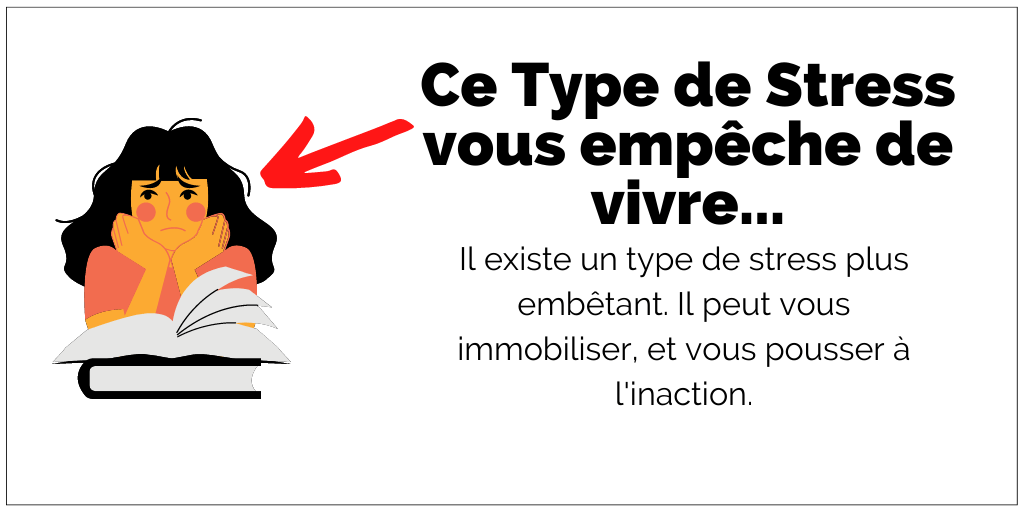
Of course, stress can be empowering and positive when it is not driven by fear. But when it is worry, anger or fear that generates it, the story is quite different. This stress can prevent us from hearing the voice of the soul. Under these conditions, we become incapable of orienting ourselves according to our intuitive intelligence. We begin to live and act only to relieve ourselves of the situation that distresses us. At the risk of missing out on your life. As soon as we lose our bearings, we become fragile. As soon as the mind is affected, everything else suffers.
What millennial yoga says about stress
In yogic texts, the human is depicted as a set of five bodies: the physical body, the respiratory body, the energetic body, the mental body and the psychic or emotional body. These five bodies are symbolized by birds, nested one inside the other. Of course, to go far, these birds must fly together. But when one of them is diminished, when the mind is affected by stress, everything else is too. The bird is exhausted in its flight, the human is worn out.

The easiest and quickest solution is… to run away. Drink a little to relax, smoke a joint, anesthetize your brain by having fun watching Netflix… Anything that disrupts the senses – alcohol, drugs, the relationship with food, sexuality, shopping, vacations and even talking a lot… – tricks the brain and keeps you stressed. We thus develop a sort of addictive behavior. These escape “solutions” can work, can provide relief and even comfort in the short term. But in the long term, they lead nowhere.

Make no mistake, practicing yoga is not enough to protect us from this attitude! It is enough to note in some people the attachment to postures, the physical intensity put in place, the excessive repetition of the same sequences... Everything is done to distract the brain's attention from the stress it is undergoing, but we continue to use without getting out of the problem. Moreover, even when we become aware of it, we often persist on this path. Despite the suffering linked to stress, we are then in denial of reality. To the question “how are you?” ", we respond "that's fine", while maintaining addictive behavior.
How does yoga work on stress?
Yoga, however, offers very real solutions. To access it, you must first dare to interrupt denial and face this stress.
Ask yourself: do you want Really get out of stress? Do you want to be yourself, find yourself? Do you really want to stop running away from life, with all the consequences that entails?
If so, you need to be guided by your “inner GPS”. By connecting with what stresses us out. By welcoming it, living it, overcoming it and accessing calm to heal it.
Are you ready to no longer be dependent on others? Are you ready to respect your lifeline despite the possibly contrary ideas of those around you? Are you ready to face the consequences of who you are? If you want to de-stress, you have to be aware of these types of consequences.
Taking this path requires both courage and endurance. Because if you really want to experience something other than stress, you have to train your mind like you do with a puppy. You have to tell him “come back here” every time it’s necessary. The mind always wants to solve the problem as quickly as possible. This is how it works. But at some point, we will have to order him to go back and stop.
From a yogic point of view, when the mind is agitated, an energetic agitation is created which causes somatization, a reaction of the body. When we are obsessed with the future, the past or someone, our energy escapes in that direction. Energy always goes where the mind rests.
Repeated, these energy leaks cause fatigue and ultimately disruption of the body. To avoid this, we must regain control of this energy. It's about interrupting the agitation that leads you to think about the future, the past, the other and bringing your mind back to yourself: "going home", so to speak.
Yoga was precisely designed to give us the keys of this return. It is based on several pillars: moderate physical activity, respiratory work, sensory behavior and relational discipline.
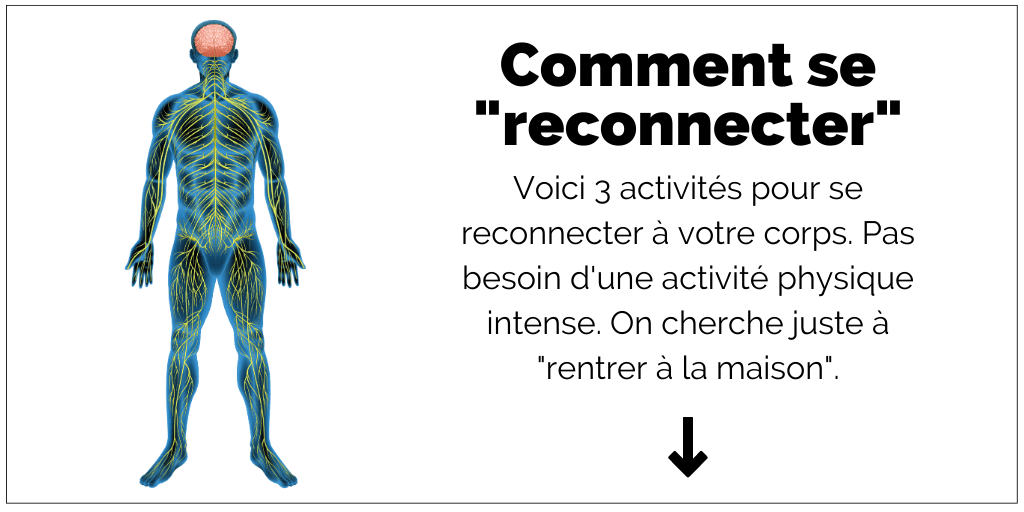
Contrary to what one might imagine,moderate physical activity is not just about postural yoga. A sport that is not physically demanding is just as suitable. Just like a practice like gardening, hiking or reconnecting with the body. The main thing is to practice consciously. This type of effort can be frustrating at first, when we cannot tame the mind, when it constantly escapes. However, we must trust the teacher, the structure that supports us. Try and try again, again and again. Pull on the leash of the mind whenever necessary, without getting discouraged. Gradually, the mind calms down and becomes less agitated. And finally, when we access this subtlety, everything changes.
What type of breathing should you adopt for Anti Stress Yoga?
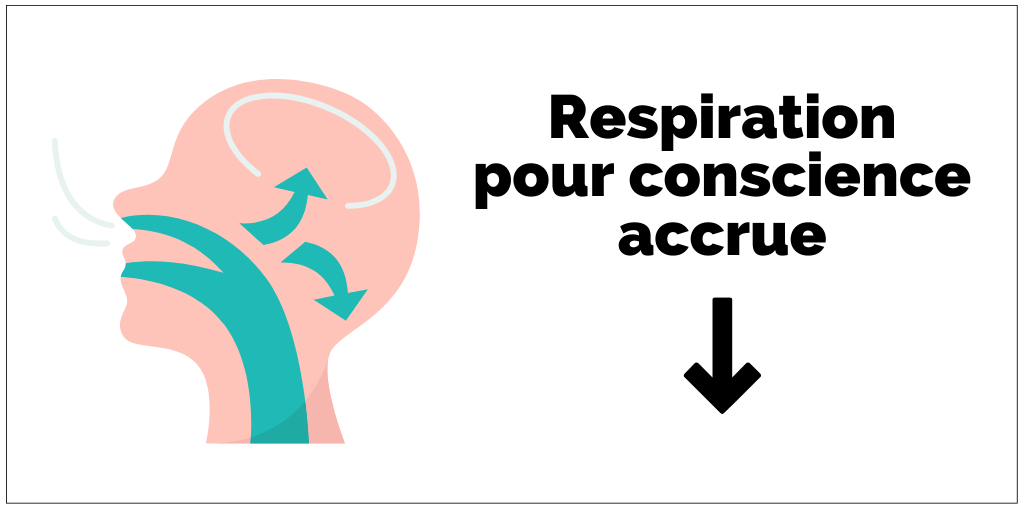
Breathe could pass for a completely banal act since it is generally experienced unconsciously. But the respiratory activity we are talking about here consists of taking the time to breathe deeply and consciously. Breathing is inside the body. By connecting with breathing, we install the mind within ourselves. Furthermore, ujjayi, deep breathing, called yogic, provokes the parasympathetic nervous system which activates calm.
In yoga, this work of lengthening in awareness of breathing is called pranayama. But respiratory activity can also involve swimming (via crawl, in particular), singing in a choir or playing a wind instrument. The advantage of yoga is that it was designed for this and is thus more complete.
When we are anxious about the future or the past, when we lose control, we only think about that and we cut ourselves off from reality. We find ourselves stuck in this other temporality and we become incapable of hearing the rest. Interrupting this virtual life requires working on sensory outfit. How ? By awakening his sensitivity. By deploying its sensory “antennas” to connect with reality. For example, by immersing yourself in nature to discern all the sounds. By having a massage while perceiving the slightest sensations of touch, by fishing or hunting to put all your senses on alert... It is then impossible to be stuck with worry: you stay there, trying to capture the most subtle of our perceptions.
Yoga finally offers get closer to inspiring people. You probably know these individuals, more or less distantly. They are those who manage stress better than you, those who are already in a more aligned life than yours.
To succeed in moving in the direction of better mental control, you must surround yourself with those who are already capable of doing so. Not by leaving your own entourage, but by integrating this type of profile, either through meetings or through readings….
Conversely, we will also be more vigilant towards “energy thieves”, those who constantly demand your attention and “drain” you little by little.
These anti-stress ways may not be what you expected to find on a site about yoga. However, let us be very clear: there is no magical posture or breathing technique that, by itself, will de-stress you. Even less so if you practice thinking about something other than what you are experiencing. Let us insist once again: the key, for each of these “tools”, is in the mental presence that you put into what you do. It all depends on your vigilance, on your determination to want to be there.
Anti-Stress Yoga Session
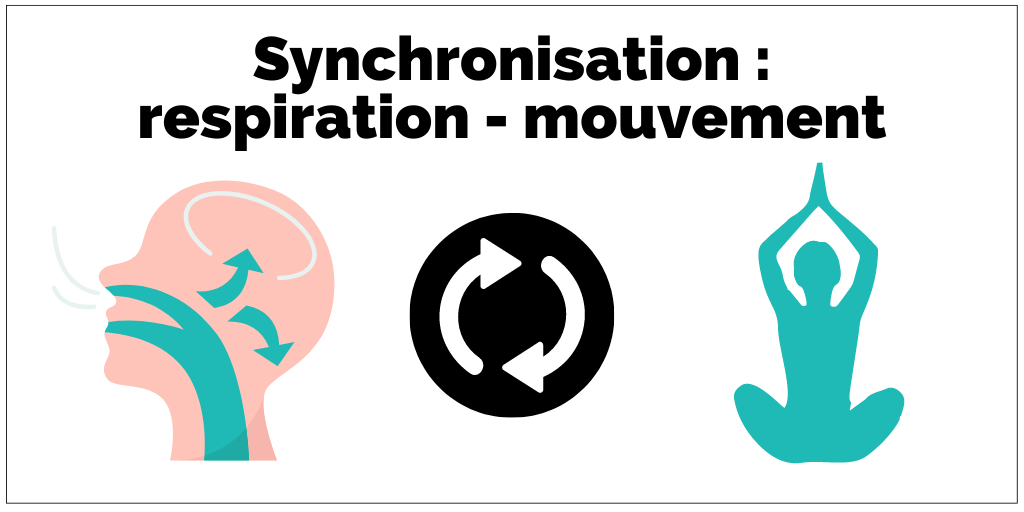
In yoga session, you will have to stay in touch with your body and your breathing. This breathing must be deep, slow, regular. And it is she who will guide you. She will become the conductor of your movements and thus a harmony will be born between the two. If the breathing is done in 3 seconds, the movement too, if it is in 6 seconds, the movement is done in 6 seconds. The postural session will take place like this: with a mind that we hold within ourselves at every moment. At all times, you stay in touch with your bodily and respiratory sensations and with what your senses tell you: sounds, smells, temperature, etc. You are therefore very busy taking possession of reality. Everything else is fantasy, imagination, fears, fear, thoughts that emanate from emotions. Everything else is often a source of stress. But when you manage to stay in the body and in the breath, you can let go of what was tormenting you at the time. The stressful situation will not have changed, it will still be there, but you will no longer look at it in the same way.
To counter stress, the important thing is how we create movement, how we create breathing, how we combine the two. And the way in which we become mentally involved in this connection between body and breathing.
When we do that, we cut ourselves off from everything: from the future, from the past, from others. Of everything that agitates us.
When you practice it daily, you build mental muscle, exactly as you do with your body in the gym. We build a mind that is increasingly capable of no longer being subject to agitation, loss of bearings and therefore stress. We learn to “come home”. And the walls of the house are the body, breathing and the senses.
This training leads to regaining space and freedom.
Sometimes even, in this state of centering, we feel what we will have to do in the face of the stressful situation. What we perceive at that moment will have to be put in place, will have to be expressed. It's scary, but you have to go through this fear because that's how you deprogram it. Then, it's over: the stress no longer exists.
We can say that the “secret” of a yoga session lies in two steps:
1) Find centering via postures, breathing, and connecting with the senses.
However, if we only act at this level, we no longer suffer the weight of the chains but we remain chained. To get to the end, you have to move on to the second phase.
2) To liberate oneself. To achieve this, you must have the feeling of what is no longer right for you. When we can truly center ourselves, we have the feeling of what we need to do, of what is right for us, of what is guided by the heart and not by stress. This intuition often generates fear but overcoming it is enough to deprogram it.
Regarding breathing techniques to de-stress, again, there is no specific one. Here too, it is necessary breathe consciously. And allow the breathing to be longer than usual.
With breathing Ujjayi, we easily reach 10 seconds on each breath. To find this breathing, imagine that you want to steam but with your mouth closed. You will create a small contraction in the throat which will slow down air circulation. This obstacle will allow you to lengthen the inhalation as well as the exhalation and create a small, very regular sound. This smooth, tremor-free, fluid breathing will stress the diaphragm and the intervertebral muscles. It will also provoke the parasympathetic system which calms the mind. Here is a video tutorial 👇
The advantage is that you can practice it anywhere. Not just when things are bad, but on the contrary daily, several times a day for five or ten minutes. We thus train the mind to “stay” in the body and breathing.
The exercise is not as easy as it seems. To help “hold” the mind, we can add a small movement of the fingers: open them while exhaling and delicately close them into a fist while inhaling, always in rhythm with the breathing. You can also stretch the arms upwards or backwards when inhaling and bring them back along the body throughout the duration of the exhalation. The important thing is to maintain your attention on your breathing and body sensations at all times.
For 4000 years, deep and conscious breathing has always been seen as the best tool for regaining mental flexibility. It helps us to fall less and to know how to get up when it happens.
To free yourself from stress, it is imperative to give yourself the means to stop fear. And for that, you have to act for at least 21 days (this is a good period of time to see conclusive results). With physical activity, breathing, sensory clothing and/or maintaining an environment that is a source of inspiration.
If you would like personalized support and more tools to reduce your stress, here is our coherence program (online yoga classes)
Related posts
Yoga Sutra
Yoga sutra I.1: atha-yoganusasanam This first sutra places yoga in the philosophical category “anusanam”, that is to say the category of experience. It is therefore not a question of theories to ruminate on, but of something to live. But what is the experience to which Patanjali devotes this detailed and profound work? It is not a physical experience, since only […]
Anti-Stress Yoga: How to reduce stress in 21 days?
Being late, dealing with unexpected events, having to answer a phone that never stops ringing... In our modern life, there are many events that can cause stress. You certainly want to know the secrets of yoga masters to reduce stress. Can yoga really reduce that stress that prevents you […]
3 Essential Yoga Breathing Exercises
Modern yoga is a “postural imposture”. Let me reveal to you the true nature of millennial yoga. Yoga is a discipline which above all allows you to regain control of the mind. It allows you to find space within yourself to express your essential identity. Yoga is not limited to postural practice, in reality […]

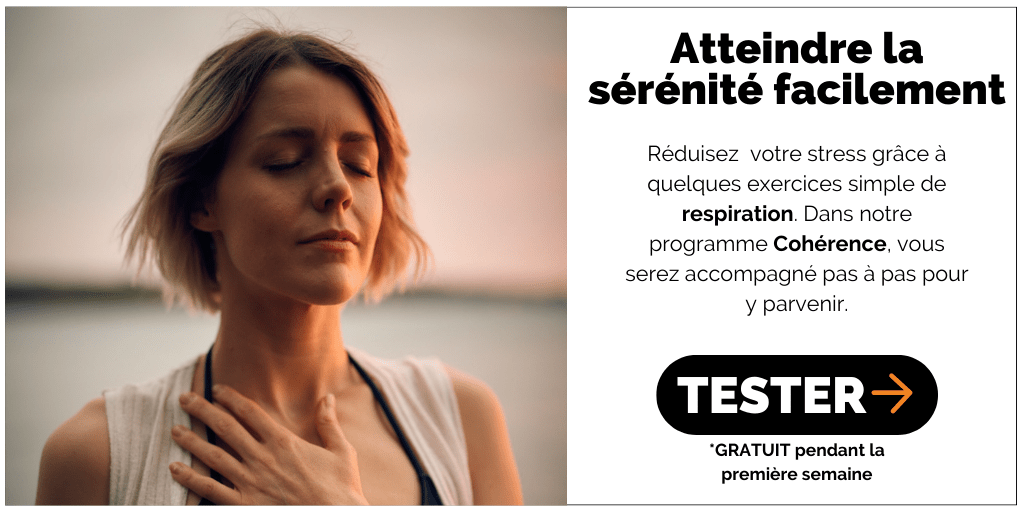



 Éric Laudière is a practitioner and trainer in the field of psychogenealogy and family constellations.
Éric Laudière is a practitioner and trainer in the field of psychogenealogy and family constellations. Julia
Julia As a visceral and digestive surgeon, Pascal is accustomed to caring for others, but when he reached his forties, he faced his own health challenges.
As a visceral and digestive surgeon, Pascal is accustomed to caring for others, but when he reached his forties, he faced his own health challenges. Géraldine Rincheval discovered Yoga 16 years ago, during her first pregnancy. This decisive moment marked the beginning of a deep relationship with Yoga, a discipline that has accompanied her throughout her life.
Géraldine Rincheval discovered Yoga 16 years ago, during her first pregnancy. This decisive moment marked the beginning of a deep relationship with Yoga, a discipline that has accompanied her throughout her life. 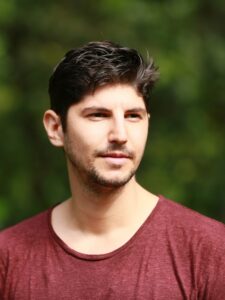 Osteopath and Trainer. Charbel helps therapists make their activities profitable, financially, on the effectiveness of their treatments and on their personal development.
Osteopath and Trainer. Charbel helps therapists make their activities profitable, financially, on the effectiveness of their treatments and on their personal development.  Philippe Pire has been a physiotherapist and osteopath based in Brussels for 38 years.
Philippe Pire has been a physiotherapist and osteopath based in Brussels for 38 years. After a diploma in History and the Art Market, and nearly 15 years as a sales manager in the tertiary sector, Sabine completed a CAP in cooking and worked in several restaurants, including 1 Michelin star.
After a diploma in History and the Art Market, and nearly 15 years as a sales manager in the tertiary sector, Sabine completed a CAP in cooking and worked in several restaurants, including 1 Michelin star. André, a Mezierist physiotherapist, has long had a spiritual quest to enlighten his path.
André, a Mezierist physiotherapist, has long had a spiritual quest to enlighten his path. Valérie encountered yoga in 2007 and without her teachers clearly suggesting it, she was immediately sensitive to the practice of breathing and in particular Ujjuyi. Also, when she discovered the teachings of Marc Beuvain in 2015, she was deeply touched by his pedagogy and his approach. She was thus able to clearly understand that breathing was a key to the practice.
Valérie encountered yoga in 2007 and without her teachers clearly suggesting it, she was immediately sensitive to the practice of breathing and in particular Ujjuyi. Also, when she discovered the teachings of Marc Beuvain in 2015, she was deeply touched by his pedagogy and his approach. She was thus able to clearly understand that breathing was a key to the practice. I am a father of two little girls. I am 47 years old living in Brussels and working in the digital field.
I am a father of two little girls. I am 47 years old living in Brussels and working in the digital field. A pharmacist by training, Julie is interested in health and well-being in general.
A pharmacist by training, Julie is interested in health and well-being in general.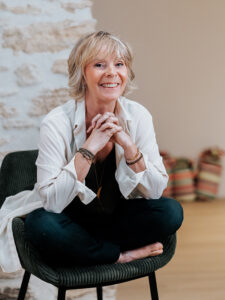 A former high-level athlete, Valérie encountered yoga in 1999 when she was looking for a physical activity devoid of competition and judgment while being passionate about subjects around personal development.
A former high-level athlete, Valérie encountered yoga in 1999 when she was looking for a physical activity devoid of competition and judgment while being passionate about subjects around personal development. Julie has always been interested in health. She obtained a doctorate in Biology in 2011 and was interested in various human pathologies such as Tuberculosis and Malaria.
Julie has always been interested in health. She obtained a doctorate in Biology in 2011 and was interested in various human pathologies such as Tuberculosis and Malaria. Frédérique has always been interested in health, wellness and natural therapies.
Frédérique has always been interested in health, wellness and natural therapies. Céline has been practicing yoga since 2008. She underwent initial teaching training between 2015 and 2019, began teaching and, at the same time, crossed paths with Marc Beuvain during a conference in Paris. Marc's vision of yoga challenges her, provokes her and touches her deeply. The first seeds are sown…
Céline has been practicing yoga since 2008. She underwent initial teaching training between 2015 and 2019, began teaching and, at the same time, crossed paths with Marc Beuvain during a conference in Paris. Marc's vision of yoga challenges her, provokes her and touches her deeply. The first seeds are sown… Marc Beuvain has been teaching Yoga for 26 years in France, but also in London, Milan, and Brussels in particular.
Marc Beuvain has been teaching Yoga for 26 years in France, but also in London, Milan, and Brussels in particular.

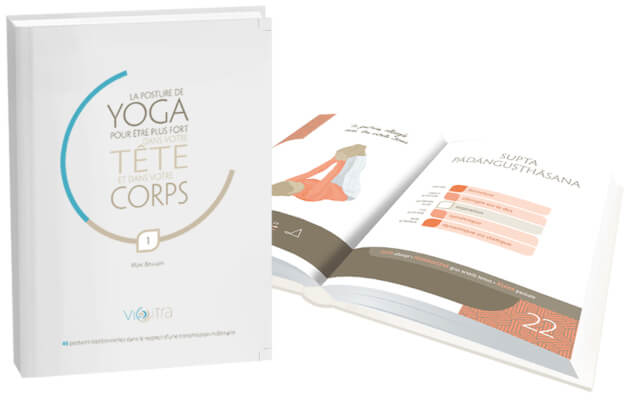
Post a comment
You must be logged in to post a comment.